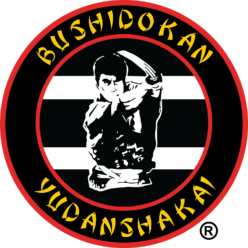By Jim Harrison (Originally Published By MA Success Magazine)
What is the third and final stage in this training process of overcoming fear?
Stage Three involves the street or combat zone. Tournaments and ring fights are always planned in advance. You know the date and even the approximate time that you will fight. Consequently, you normally have plenty of time to think, and to worry, about the possibility of losing.
Street fights, however, are normally spontaneous eruptions and, consequently, you have little, if any time to anticipate them and little time for the flight adrenalin to activate. In most self-defense situations, you know only that there is impending danger. As a Law-enforcement officer, you realize that a combat situation might develop but not always. In military combat, and certainly with a SAD (Search And Destroy) Team, you know that combat is definitely impending, it’s just a matter of when?
In police situations and military combat, you also know that there’s a very likely chance you will be wounded, crippled or killed. In the sport ring, of course, the chance of injury, and especially death, is much more remote.
Therefore, there are two different types of fear involved in these two different environments. The fear of humiliation and possible injury in the sport context, as opposed to the fear of serious injury and possible death in the others.
In competition, ring fights to the knockout are more decisive, but still conducted with restricting rules and a referee who can stop the fight. In combat, it’s a fight for life or death, with no rules and no referee – only your brains, skill, experience, conditioning, determination and luck. Without rules, the man with the best ability to improvise, and who will take the greater risk, is usually the winner – providing that plain luck doesn’t interfere.
Where is the turning point in overcoming fear?
Whatever game we play that involves risk, it is essential that we prepare ourselves, both mentally and physically. However, to enter the game we must normally push ourselves to enter it, and that is the critical turning point. We must actually – and perhaps often – force ourselves to step on the mat or into the ring, to climb out on the wing of a plane, or paddle into the rapids, and so on. Basically, to take that step from which we simply cannot retreat.
The rest is easy. Because there you are: In the match, in the air, in the canyon, or in the fight. Then you simply do your best to not only survive, but to excel and to win. It just takes that first difficult step, jump or leap.
More often than not, once you take that crucial step you will find the experience exhilarating! So go for it. Even when you lose or fail, you will feel better for having tried. Then you say to yourself, ‘I’ll do better next time.” And with that attitude, “next time” will surely come.
Overcoming fear is a matter of courage. Not being afraid is stupid. To stand and advance into the jaws of fear is simply to conquer, first, yourself, then your opponent. And conquering your opponent may be easier.
How can I develop your kind of attitude, one of unadulterated confidence in the ring or in combat?
I don’t know that everyone can. I can only relate my experience of how I did it, and how many of my students and the fighters I’ve coached have. But I do know that, unless you try, we will never know if you are one of those people who can or not.
One, you begin by initiating the steps I set forth earlier. By working out in a tough training hall, including a tough instructor / coach and tough teammates / sparring partners. By competing in sport contests, formal bouts and matches. And finally – if this is your desire – by testing your skills, conditioning, attitude and fortitude on the street in self-defense and / or in combat.
Like I said, to learn to swim you’re going to have to get wet.
